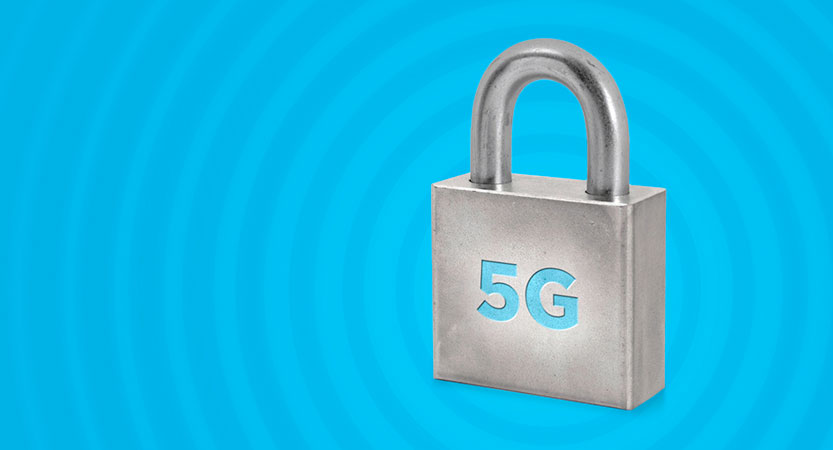A guided tour into the heart and brain of Private 5G
Look ma, no wires!
One of the more short-sighted positionings of a general purpose technology was the use of the word best effort to describe mobile networks. While it was quite true and painfully so, it brings back bad memories and has done a poor job of setting the table for this generation’s banquet – 5G.
Hoping to unring that bell, we 5G purveyors proclaim ultra fast, ultra low (bounded) latency, ultra secure, ultra reliable, five nine connectivity, low cost, gumbyesque flexibility etc., etc., we’re excited, and they can tell. Still, you can’t blame mid-market buyers for their jitters about going private 5G when those promises seem to ring a little empty given the past. Remember, we’re the ones that ensured that that cop out concept of Best Effort was solidly associated with the wireless brand, the same thing we’re selling today.
Salesman: Best Effort? Oh, that? Yeah, we fixed that!
Buyer: I’m listening…
Some parallel analogies come to mind: McDonald’s healthy menu. Postal Services going high speed delivery. Facebook ensures our children’s mental health online. But perhaps as an industry known for unreliability, selling reliability finds its best match with the openly unfaithful spouse suddenly announcing their fidelity. My friends, we have our work cut out for us.
The other day I met a neighbor just getting finished on the construction of a new home. Starting with a tour of his epic garage, as gents are known to do, I couldn’t help noticing the rather robust LAN network rack he’d installed, and I asked him about it.
Me: Why all the wiring?
Ned: Are you suggesting WiFi? Are you…[Portions of this answer may be painful to people in the world of the WiFi]…f@#$% kidding????
Taking another envious look at his LAN rack, I couldn’t help but agree. He’s right, and his home network is going to vastly outperform any of ours in the neighbourhood.
The point of this is not to diss WiFi, kick Bluetooth in gob or even slight cellular radio, but we have to remember that in the minds of most buyers, who, even if they’re educated enterprise IT folks, are also consumers. You can’t fault them if they may or may not differentiate the many flavours of wireless ice cream we’re offering – softcone dips to gelato. What they do remember is best effort.
So here, and before I commence in earnest in what will become, hopefully months, maybe years more of writing on this topic, I offer this admission. To date, a great many wireless technologies, including 4G, but especially 3G have fallen woefully short of the mark of delivering anything like the kind of ironclad reliability and performance required for mission-critical enterprise. There, I said it.
The big difference between our evolutionary change, from grey wizard, to white wizard, and why 5G is, quite to the contrary nothing like the unfaithful spouse, is that it is a completely different person, refactored and replatformed from the ground up to deliver precisely on the mission critical use case. The employment of OpenRAN, the first truly transparent radio standard means its performance and reliability is anything we want it to be.
That alone should be enough to convince you of the following:
Imagine your next car is now say 150lbs lighter. Why? Because the manufacturer has figured out that wires are dumb, and can set the whole system up as a mobile, self-contained 5G network – every sensor, from your steering wheel to your axel to your powertrain in perfect wirelessly suspended animation.
Salesman: Sounds great, doesn’t it?
Buyer: Well I sure won’t be road testing it, but go on…
Right, I get it. We still have a ways to go.
Before I can tell you that 5G is even more reliable than a wired network, I need to convince you that it’s as reliable. Some of the recent reviews of Telsa’s driverless car describing the experience as “truly frightening” come to mind. These responses do more damage than the worth of coming quickly to market as Tesla, with all its torque, seems to have done.
In the case of 5G, while the steps have been slow, methodical and at times painfully so, the results are truly astounding. Definitely not a new, virtual layer of your father’s wireless network, 5G is a complete refactoring of radio connectivity, from the edge to the cloud and back again from end-to-end. It is precisely the opposite of Gs that came before. Where previous Gs delivered a black box, one-size-fits-all network, 5G is all about what the operator needs it to do, and in the case of private 5G, what you, now the operator, need it to do. In the simplest terms, 5G networks deliver better than LAN speed and reliability, but much more than that, they provide the platform for theoretically limitless virtualized network functions, fit-to-purpose commercial grade network slices and complete logical control thanks to 5G’s native NEF (Network Exposure Function).
Still, in order to convince you that your 5G powered automated factory isn’t going to go HAL the moment someone runs the microwave, I need to demonstrate it. To do that I need to connect #5G with the word that nearly always follows, “Verticals”, and show you what 5G means in the very specific context of your business or operation. But there are some key general features that deserve a deeper dive.
On-Prem 5G for Maximum Security
For compliance and regulation-driven companies that are rightly security-obsessed, the decision to keep their networks on-premise is a no brainer. While a great deal of edge and cloud functionality can be layered in to effect hybrid-cloud type architectures, the desire for complete control and accountability means keeping your core on-prem. That is precisely what private 5G is about. While a Private 5G system’s physical footprint, which we’ll look at next, is relatively miniscule, it’s layered security profile can be as robust as the multi-factor authentication and zero-trust protocols you put into place. But in a best-of-both-worlds scenario, that doesn’t mean handing out dedicated batphones to your workforce to close the loop. The very fact that you are operating your own private mobile network means the risks of BYOD disappear as these devices have fully programmable soft SIMs ensure safe hops from the public network and back again.
Two great examples of this come to mind, one very much already in play and another currently in deployment. One of the world’s first applications of Network Slicing actually happened using 4G LTE for a Finnish broadcaster, and it was my great honor to be a part of that solution. I bring this up because delivering flawless, live stream Broadcasting provides a perfect use case for the benefits of private 5G. For going on a decade, broadcasters have been balking at the high cost and next top zero flexibility of a Satellite trucks to deliver live, “occasional video” event coverage. But no surprise. As quick as they were to move to the Internet, was as quickly as they were let down. If you want to talk about Best Effort at its worst, examine the truckloads of packet loss, jitter and buffer bloating peaks delivered over standard UDP internet protocols. There’s been a great deal of development of standards and open protocols to help fix that, like MPEG-DASH, the now aging SRT, and more recently Apple’s HLS protocol. Still, what works over robust LAN networks is not going to save your multi-billion dollar licenced Olympic broadcast feeds. In the chaos of a crowd of tiktok feeding, selfie-snapping fans, your mobile enabled video camera is just gonna have to get in line.
In a perfect marriage of mobility, flexibility and performance the Private 5G rig saves the day. It’s small physical footprint – something closer to a large WiFi transmitter linked server rack than a full base station and enclosure – should in no way suggest anything but full lossless, synchronous 4-8k. With no competition for spectrum, using dedicated frequencies and the ability to dial up different camera and device profiles on a whim, it’s truly next generation live broadcasting. What’s more, while consuming 10s of watts in place of kilowatts, the whole rig can be packed up into a small cube truck, ensuring as low a carbon footprint as one can get.
Another, more modernistic example, and already in deployment is about 420 kilometers up in the air, and that’s the international space station. It’s hard to imagine a moire mission and safety critical application that this when in a steel tube surrounded by zero atmosphere. Here private 5G plays key roles in delivering airtight security, rock solid reliability while enabling full use of Ka-band spectrum and an astronauts very own personal cellular. This use case takes BYOD to a whole new level, literally.
Back down to earth we can see that Private 5G is a game changer in delivering all of the security and reliability benefits of a on-prem LAN network while delivering mobility, BYOD convenience and the most special sauce of all, Network Slicing all from what’s known as a COW – Cell on Wheels. In all of the use cases we’ll discuss in these pages, from Industry 4.0 to public transport, dedicated, leasable vertical-specific MVNO use cases, while the hardware may change based on the needs, the fundamentals of 5G’s winning combination remain. So while it may still be a few generations away from something my neighbour will install at home, he’ll certainly be ready to say good-bye to his LAN based network once and for all.







Pingback: Is 5G over hyped? - Cumucore